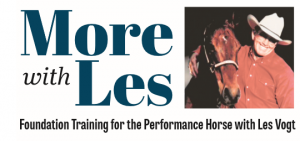 Now, I’m going to introduce you to the whole stopping program so you’ll know where we’re going with this. Although we’ll only cover the basics – the collected stop – in this level, this will give you an idea of where we’ll be headed as you advance in this program. We’ll call the stopping program the “Seven Steps to Big Stops.” The seven steps are sequential, and you have to pass each step, and get a good grade in each phase, or you can’t go on. I guess you could but you’re going to get an “F” in the next one. It will take time, but you will get it, and like everything else, you have to work at achieving perfect form at each step so that you can get perfect performance.
Now, I’m going to introduce you to the whole stopping program so you’ll know where we’re going with this. Although we’ll only cover the basics – the collected stop – in this level, this will give you an idea of where we’ll be headed as you advance in this program. We’ll call the stopping program the “Seven Steps to Big Stops.” The seven steps are sequential, and you have to pass each step, and get a good grade in each phase, or you can’t go on. I guess you could but you’re going to get an “F” in the next one. It will take time, but you will get it, and like everything else, you have to work at achieving perfect form at each step so that you can get perfect performance.
We might say that a horse stops well, but there is really so much more to it. Stopping means to cease forward motion, but the stop itself is really the least of my worries. First, the approach has to be good, the form has to be perfect, and there can be absolutely no resistance – if any of these elements aren’t great, the stop won’t be great either.
Whoa
The procedure to Seven Steps to Big Stops is first of all to condition our horses to “whoa.” The word “whoa” is a special word, and we don’t use it at random. It means that “you stop, and you can’t go there anymore.” In a perfect world, you’d have had your horse as a yearling or a 2-year-old, and as you worked him in the round pen or on the longe line you’d have taught him the word “whoa.” It is a strict word—it means you can’t go forward anymore. We usually say “whoa,” and then back him or turn him after, to reinforce that he’s done going in that direction. Very seldom will we walk off forward after he stops.
So, we have the word “whoa.” Now we need to work on collection. We have to have the neck with no resistance. You’ve learned to do that. So next we need to ride our horses up from behind to the front. We speed the back motor up and slow the front motor down, and in the meantime the neck has to stay perfect. And from that we create the collected stop like we’ve worked on here.
Signal Stop
The next phase will come aft er we have gott en through the three gears, (that is, the three gaits with the collected stop) and it’s what I call the signal stop. The signals are 1) we assume a stopping position, 2) we say “whoa” and 3) we drop the reins instead of pulling. Ninety percent of the time the horse just says “duh” and trots on. And that’s okay!
So as we say “whoa” and use all these other signals, he’s not going to stop. But as I said before, I can’t make him stop, but I can make him wish he had. So, I start working up the reins: one, two, three, four and five. So, there are actually six or seven signals before there is an actual dead end to it. Pretty soon the horse is going to start stopping from a lighter and lighter pull, and before long he’ll start paying attention to the other cues—the weight, the “whoa” and the slack—because if we’re really consistent, he’ll figure out that if he stops when he feels those, he won’t get pulled on at all!
-Les
Les Vogt has won more than 15 World Championships, including two wins at the NRCHA Snaffle Bit Futurity. Today Les focuses is giving clinics around the world and developing products for the performance horseman. To learn more about Les and to see his clinic schedule, visit www.lesvogt.com.
Leave a Comment
All fields must be filled in to leave a message.